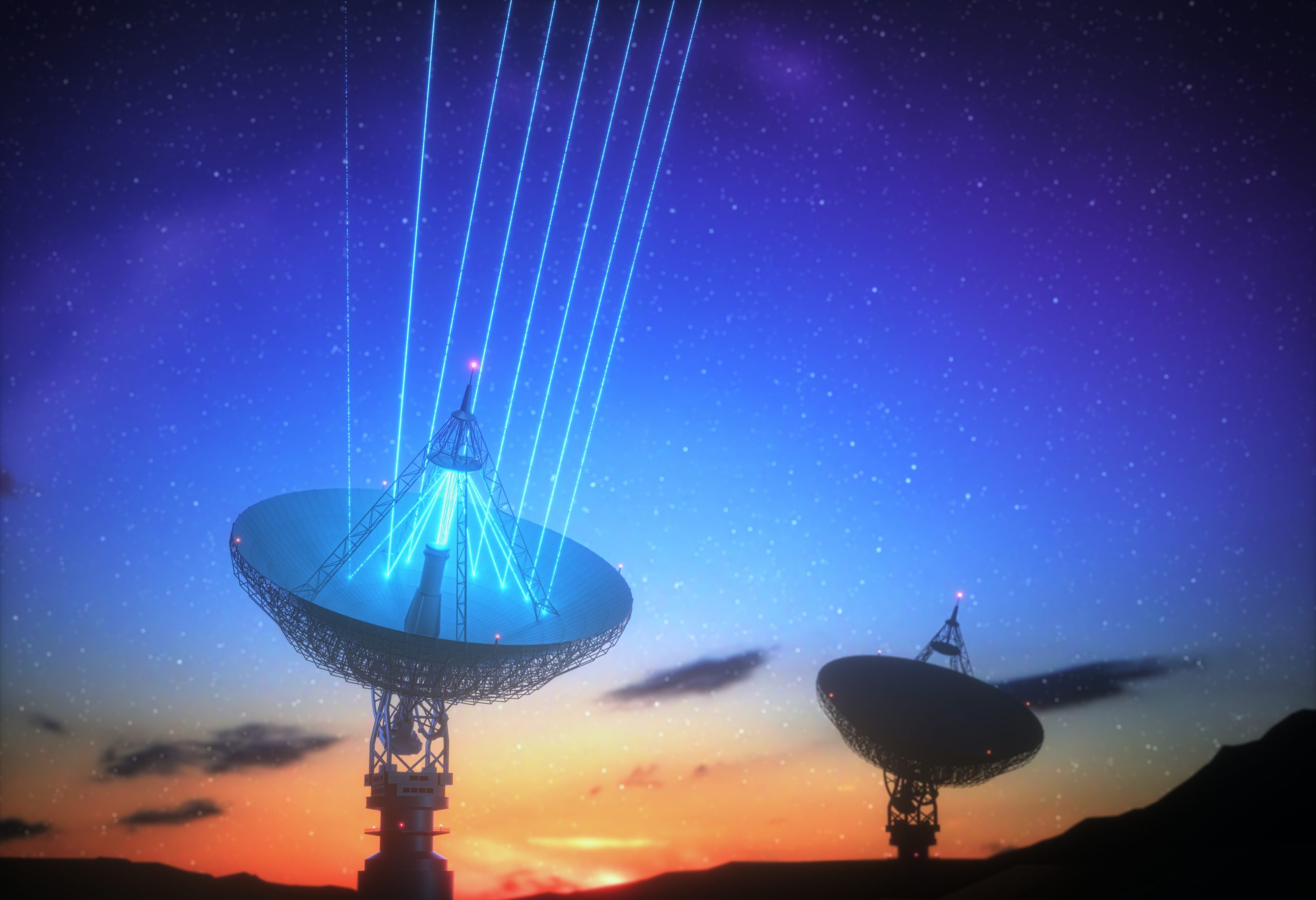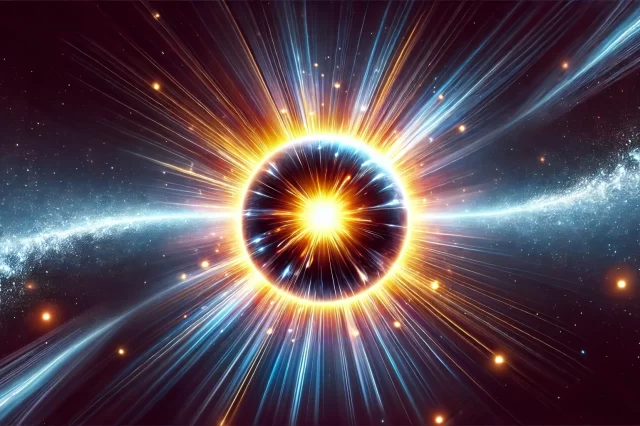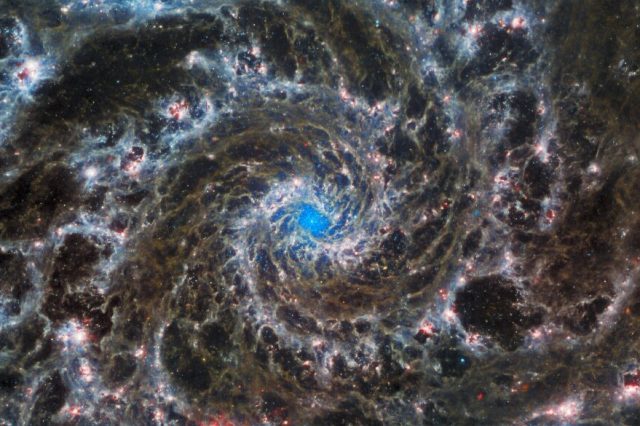A recent paper proposes that the Wow Signal originated from a Stochastic Repeating Beacon.
Humankind has searched for traces of extraterrestrial life for decades. In addition, much effort has been put into exploring the possibility that there are intelligent civilizations on other worlds. To date, we have not received any official confirmation that this is the case. Nonetheless, there have been several possibilities of what may have been “first contact,” and the greatest possibility of this being the case is the famous Wow Signal. The signal was detected by the Big Ear radio telescope at Ohio University on 15 August 1977. It was a strong, continuous narrowband radio signal that lasted at least 72 seconds.
Given the design of Big Ear, we do not have much information about this signal. Instead of tracking radio signals like most modern radio telescopes, Big Ear used Earth’s rotation to scan the sky rather than tracking radio signals at all. Because of the source’s ability to sweep across Big Ear’s observation range, the Wow Signal lasts 72 seconds. Similarly, Big Ear functioned as a passive telescope. It is designed to be set up and run automatically, recording signal strengths as they occur. Due to this, the signal was only detected when recordings of observations were reviewed a few days after the event. In the time it took astronomers to go back and observe the source, it had already passed.
What was the Wow Signal?
Even though the Wow Signal only has one observation, it is considered the most likely candidate for extraterrestrial signals. The theory of its natural origins has been proposed several times, but all of them left much to be desired. Therefore, a terrestrial signal, perhaps from a passing plane or damage from space debris, seems to be the most likely explanation if we consider it not to have come from intelligent aliens reaching out. But there are a few things to consider. An aircraft would be out of range after 72 seconds, and no such flight has been recorded. There is the possibility of a scattered signal, but its strength would be unusual in this case, and the frequency of the Wow Signal would be restricted.
Several years ago, there was a claim that comets near the observed sky area were responsible for the signal, but this has been disproven since then. The two comets were close to the source location but not within the observation area. In addition, comets cannot possibly emit such a solid narrowband signal. Signals with frequencies very close to 21-centimeter lines are particularly interesting. Neutral hydrogen in the universe is responsible for this faint radio emission. Any radio astronomer in the universe could make observations with that frequency because hydrogen is the most common element in the cosmos. If you wanted to draw alien astronomers’ attention, you could use a strong signal on that frequency.
There have been several attempts to repeat observations of the Wow signal due to its tantalizing nature. There have been a number of radio telescopes aimed at the source over the years, but no success has been recorded. All subsequent studies have failed to find anything. After decades of searching with no results, astronomers decided to try something different: they decided to look at what observations exclude. This idea is presented in a recently published paper on the preprint server arXiv.
The wow signal as a stochastic repeater
In their article, it is suggested that the source of the Wow Signal could be some form of a stochastic repeater. Sources that repeat tend to be periodic. Fast radio bursts or variable stars can both show predictable variability. Astronomers have considered this idea, and observations have ruled out a source with a regular periodicity. Stochastic repeaters differ from regular repeaters. A stochastic repeater does not have a fixed period. It repeats rather randomly. An earthquake is a good example. Although we know where they tend to occur and will happen again, it’s nearly impossible to predict when. Similarly, astronomical processes can be unpredictable — stochastic.
The Wow Signal has never repeated, and we proved throughout the years that it does not repeat periodically, but it may be that the signal has repeated so randomly that we have not observed it. The authors seem to be arguing that because we haven’t observed it repeating, it must not be random. But this claim isn’t as ridiculous as it may sound. By looking at unobserved bursts, the authors can estimate when a future burst might occur by applying Bayesian statistics. There is a subtlety to Bayesian statistics, yet it is extremely powerful. There is more to it than just computing odds. Bayesian statistics use patterns to predict specific outcomes.
In addition to how frequently things have occurred, it also considers how those events have changed over time. Therefore, based on the timing of one burst event and the timing of other burst events that have not yet occurred, the authors determine the likely timing of future events. This allows astronomers to observe the regions when there is the greatest likelihood of an event happening. For example, we will likely catch a new event if the Wow Signal is a stochastic repeater. In the absence of another event, we can rule out stochastic repeaters and focus on new ideas that could explain the Wow Signal.
“The Wow signal cannot be excluded as a stochastic repeater with available data, and we estimate that 62 days of accumulated additional observations would be necessary to surpass 3 σ confidence,” the researchers wrote.
From a potentially habitable planet
It is noteworthy that a study published in 2022 looked into the origin of the Wow Signal and wondered whether it may have originated from a planet that could develop life as we know it. The paper published by Alberto Caballero, a Habitable Exoplanet Hunting Project researcher, suggests the Wow signal likely came from a potentially habitable star system, one that could have a planet where life exists. As we reported, Caballero managed to narrow the search to a single Sun-like star called 2MASS 19281982-2640123, located 1,800 light-years away in the constellation Sagittarius. It is likely to have a broad habitable zone, and there could be a world similar to ours in orbit around it.





